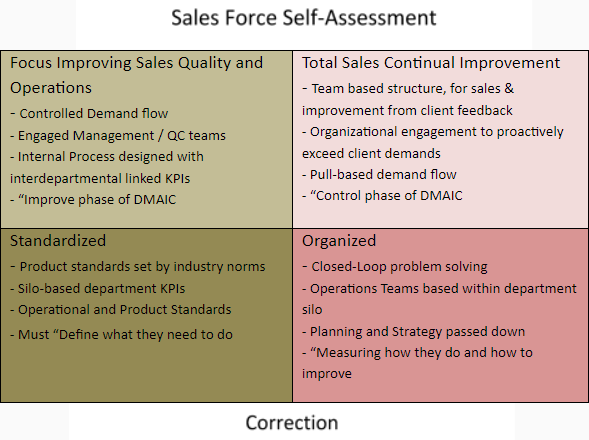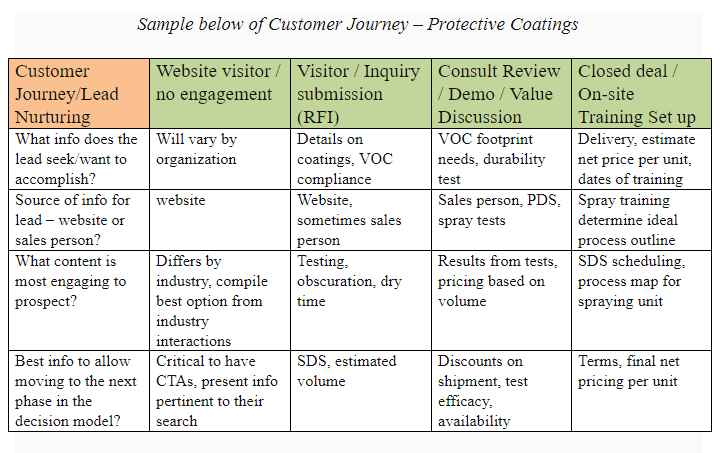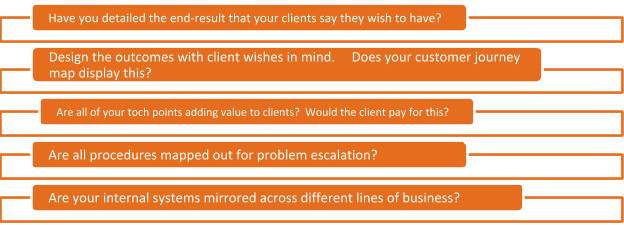Business Development - Going with Your Gut Is Not Enough
“If it isn’t broke don’t fix it!”, has to be among the top 10 things you will never hear a Six Sigma Process-trained Marketer utter.
The Need for Optimizing Processes
Nothing stresses out a top executive of an organization more than an increase in cost per sales and a drop in sales. Is there a process that can optimize these two parameters and boost business development endeavors?
Lean Six Sigma has the answer. The use of tools offered by Lean Six Sigma can help streamline sales and marketing operations. In the case of sales, fewer mistakes mean fewer lost sales. The value created translates to higher revenue per client.
The focus of lean sales thinking is a clear understanding of how we create value for the customers. This value is through our products and services. The sales and marketing departments are in the vanguard of this goal of applying Lean Six Sigma's principles and tools. The sales and marketing teams understand that the pricing of the organization's products and services is based on the value they create for the customer.
Many companies continue to pursue the delusion of a simple cost-plus model. Engaged salespeople understand their clients. They know that a customer will only pay a price that matches the value of an item. It is the customer that drives the value of your products and services. Salespeople know the cost of the product or service does not concern them. Lean Six Sigma organizations have systematic methods to focus on customer value. They do this throughout the entire organization. They calculate the value each interaction creates for the customer.

The term Sales Operations describes the repository for everything in an organization that is sales. This department can be the catalyst for improvements that can have an immediate impact on performance. It is easy to become hamstrung by a reactionary trap. You can exceed your goals on a well-built plan to optimize Customer Lifetime Value(CLV). CLV can begin building before they even place an order.

Organizations have tried tackling the challenge of “optimizing” sales processes in many ways. For instance, while looking to reduce costs or to maximize potential revenue organizations often try out some or all of the following :
• Customer satisfaction surveys
• One-level voice of client analyses
• User-experience professionals, etc.
These techniques point organizations in directions they feel their clients want them to go! These analyses also focus on several sub-processes sales operations. They often may not reveal the full picture of an organization’s response to buyers. They also can fail to highlight the intrinsic value your product brings
How many organizations take a step back and do a “6000-foot view” of the customer journey? Most organizations say they "offer solutions". You want to develop operations to achieve outcomes for your clients. For example:
• Is your purchasing/sales process optimized? If yes, then who is it optimized for, the clients or your organization?
• Do your client interactions ever divulge what clients “don’t want”?
• Do you ask your clients “If you were selling to this industry, what would you offer?”
Mapping the Customer's Journey
One way to begin this optimized restructuring is to study the path your prospects take. There are often many steps or stages or phases. Your job is to study each phase of that journey. Mapping a customer’s journey is determining the track a client takes during the entire interaction with your organization (such as research/probing, on-boarding, fulfillment, problem resolution, etc.).
The journey will include all touchpoints and any inter-departmental exchanges. If you serve different industries, your customer journey will also differ by industry. As a manager, you want these experiences to be as positive as possible. Often, it is during these inter-departmental exchanges that many of the defects and errors occur. A thorough map of a customer’s journey can reveal opportunities for improvement. It can also identify bottlenecks and “defect points”.

Root Cause and Cause/Effect Analyses are an effective way to analyze the customer’s “journey”. Through analysis, it often becomes clear that there is a lot more going on than people not caring. By completing a C&E Diagram, you will often uncover and locate the cause of some of the systemic limitations (i.e. bottlenecks). These are defects your representatives have to deal with. Some of these may include issues like:
• Outdated training material - including videos
• Website errors and lack of a governing “style guide”
• Dissimilar processes or procedures
• Non-access to customer route information
• A disjoint in the performance measurements by department
• Unassigned tasks or open tasks in a queue
• Different task guidelines for different departments.
Lean Six Sigma processes reduce the variability of both - steps and results in a process. It will purge wasteful steps that provide no real customer value. Do not use this detailed analysis only to make things more efficient. This deep dive is an ideal time to determine which steps in the journey interact with marketing and which, with sales. This is particularly critical with complex sales industries and well-trained sales teams. Determine the steps in which marketing will interact with prospects (up-selling to clients). You will also create a “knowledge bank” of items that provide value. This is information that will position your organization alongside the strengths you deliver.
Some questions to consider in mapping your customer’s journey are:

It’s always important to place ourselves in our “client’s shoes” and see our processes through their eyes. This exactly what analyzing a customer journey does for a sales and marketing team.

Concentrate on symmetry between Marketing, Sales and Customer Service
For many simple, commodity-type products, the assumption of increased sales is simple. It is often a one-call-close environment. Increase the number of calls and you have a high probability of increasing sales revenue. There are industries with a complex sales process.
This may be from high up-front costs or high replenishment. In these industries, the focus is on Customer Lifetime Value (CLV). CLV is the total revenue generated by a customer over the relationship with a company. For multi-line companies, it takes into consideration any up-sells, as well as cancellation rates and gross margin per unit.
The success of sales and marketing is on the quality of sales interactions. It is not due to sheer numbers of interactions - a quantity so often pursued. Sales and marketing teams will develop stronger ties under these circumstances as well. Teams need to be proficient at identifying client needs and proposing the outcomes that benefit the client.
For marketing and sales symmetry to occur there has to be a concrete understanding of the same goal. Attempting to define a goal as “creating value” is too generic without a solid definition. You must define a term or goal. Otherwise, team members will conduct activities – “touches” – in an independent manner.
Their own insular point of view will influence the activities. Simply put, you must translate value into clear measurable actions. A team must understand what customers - or category of customers - value, seek, or desire. The team can then develop, measure, and deliver the outcomes sought.
A deep understanding of customers is the difference between “customer satisfaction” and “customer value”. It is the difference between making a sale and creating a client. It often translates into higher customer lifetime value. One tool that we have covered in previous articles is that of a Voice of the Customer Analysis (VOC). VOC analysis help team members focus on the outcome you deliver. What the client considers critical to quality.
Six Sigma tools are also well suited for the alignment of sales and marketing teams. Two such tools are the Sales Process Map and Value Mapping.
The Sales Process Map
A Sales Process Map is not a customer journey. Think of sales as an assembly line -like a process. A process is a set of related activities designed to produce a specific result. With sales, some goods get “completed” before others. Ask your team if they can determine an action or result that each step is creating.
As you consider each step on the map, are the actions of your team getting the desired results? Also, is it worth the resources you allot to the step? You will need to measure these activities to do a thorough analysis. But to measure you have to define what you are measuring.
For example, how do you measure the cost of attending a trade show or the cost of a website redesign? Can you track leads from a show (not what you sell at the show, but also leads nurtured for months before onboarding)? How are you measuring website visitors and leads from a website? Are you effective at this? Do you know your customer’s journey well enough to create value through your site? Does the information on your site encourage visitors? Do they want to engage with your team and seek more information? A Sales Process Map can assist in answering these important questions.
The Value Map
A Value Map can have two different directions, both of which are important. You can create a Customer Value Map and a Product Value Map. Customer Value Map (CVM) focuses on what is important to your customer and the outcomes they seek. It will help your sales team to circumvent head to head comparison with competitors.
This comparison may drive down prices. A CVM can highlight areas your customers do not consider to be important. It allows you to apply minimal effort in those areas.
The most important aspect of CVM is it identifies the impact of your product/service across the entire customer organization. In business to business – complex – sales, a customer is rarely one person in purchasing. Your product can impact several levels and departments in an organization. It may even be critical in some.
This mapping process helps to highlight crucial aspects of what your product delivers. It has been my experience that it not only illuminates for the salesperson, but also for the client. It can also produce many “internal champions” for your product. This can be helpful in solidifying the supplier-user relationship.

A Product Value Map is like a "Features and Benefits Outline", common with many sales functions. One addition to a Product Value Map is a "Prompt to Action" aspect. The map denotes why the features or benefits are important to a client. What would a prospect do that would make this feature/benefit important to them? Would it differentiate them in the market?
More than anything the exercise of laying out this map is important to your whole team. It instills an understanding with your team and gets them focusing on the needs of clients. It puts them in their shoes. Try these exercises with your sales and marketing teams for fewer mistakes (errors) and consistent delivery in your sales operations.
Here is an easy tool to create your own Customer Value Map

Become a certified Quality Management Professional. Check out our courses.
